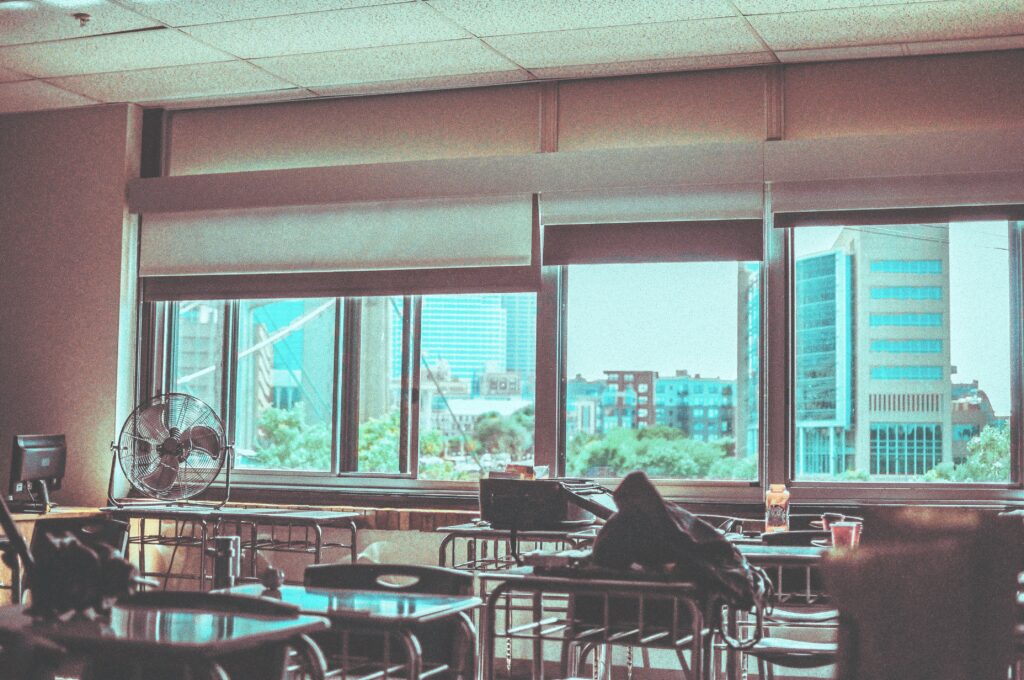Education students navigate return to in-classroom practicums
3 min read
Many education students are back in local schools for their practicum observation classes. Some students are experiencing their first in-person practicums due to the pandemic. || Alex Simpson / Unsplash
by DEVON MACHANDE
Staff Writer
Due to editor error, a previous version of this article misspelled Lauryn Bailey’s name.
Many education students are back in local schools for their practicum observation classes. Some students are experiencing their first in-person practicums due to the pandemic.
“As future teachers, there are a great number of requirements we need to meet and a great number of classes we need to take to be qualified,” said senior Allison Palmer, an English major in the five-year education program. “Condensing all of the requirements with classes and practicum simply stresses the students out, as well as leads to burnout.”
Dr. John Broome, chair of the College of Education, explained that the program was shortened and changed since the end of the five-year education program.
“We have reconfigured and updated our programs to meet an undergraduate experience,” he said. “Though they are shorter, they are also just different. Students just don’t have as long of a student teaching experience as the five-year program, but they will be well-prepared.”
For Erin Wilson, a senior psychology major enrolled in the five-year education program, the transition back to in-person practicum was not as smooth as she hoped it would be.
“I feel a little thrown into it; they didn’t really talk to us about going back in person a whole lot before we went back to practicum,” she said. “Also, I’m a little nervous about being back in the classroom since a lot of students aren’t vaccinated at a young age.”
Lauryn Bailey, a junior history major in the secondary education program, was also concerned before starting her first in-person practicum this semester.
“So far [practicum has] gone very well, but I was a bit nervous starting it because I had never gone through all the requirements for an in-person practicum before,” she said. “Last semester it was my first ever practicum, so it was mainly focused on observation. This semester, I’m starting to get more into the day-to-day stuff of the classroom. We’re basically supposed to do more than just observe, and it’s kind of at the discretion of the mentor teacher.”
When asked if she feels she was prepared for this practicum, Bailey said, “I do and I don’t. I think I would’ve preferred to have gone in person last semester. I don’t think I was prepared for the in-person part, but I do think my professors in the College of Education are doing everything they can to help us. They’re very understanding and supportive. It’s just a big adjustment I think, going from all-online to going in-person.”
Wilson, who is doing her practicum with a first grade class, said that the students are having a harder time with the transition, which has made her practicum experience “chaotic.”
“First grade classrooms can be chaotic in general, but this one is different than anything I’ve ever seen,” she said. “Learning how to sit still in the seat, learning how to talk to your neighbor quietly, learning when to be quiet and when they can talk, and how to raise your hand, that’s really hard stuff for them right now because they’ve never really been in the school environment. I think teachers are really struggling and it’s not their fault.”
Broome has faith in the College of Education students.
“Will there be an adjustment from their Zoom learning experiences to student teaching? Sure. But they are adaptive, flexible, and highly qualified future educators and they are mentored by experienced teachers. They will do great!” he said.


